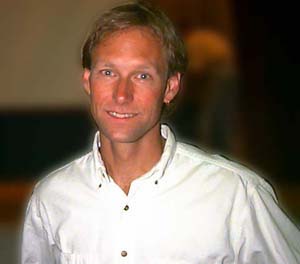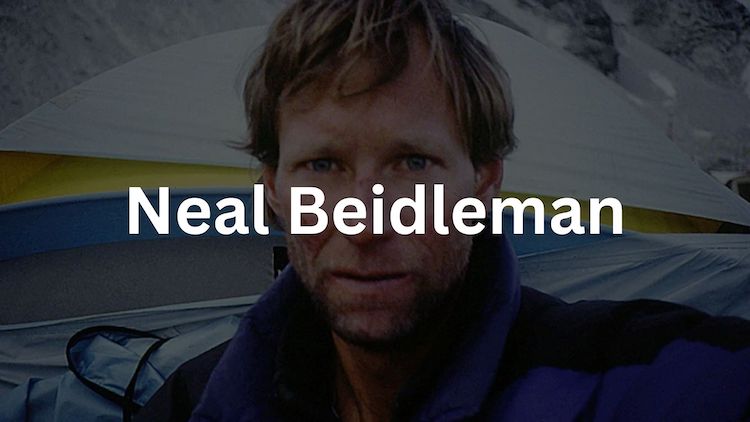Neal Beidleman, a renowned mountaineer, has found it challenging to escape the shadow of Mount Everest. The tragic events of the May 1996 Everest Disaster, have left a lasting impression on climbers. Beidleman is no different, working as one of the guides for Mountain Madness, during the disaster, he had to experience the tragedy first hand.
This blog explores Beidleman’s time on the mountain, his motivations for returning to Everest, and the complex emotions surrounding his decision.
Early Life and Everest Connection:
Neal Beidleman’s love for the mountains and adventure was nurtured during his upbringing in Aspen, Colorado. Drawn to the allure of exploration and heights, he embarked on a career as an engineer and mountaineer.
As a guide under Scott Fischer, Beidleman experienced the tragic storm that claimed the lives of several climbers, including Fischer and Rob Hall. Moreover, Krakauer’s book shed light on the events, leading to a lingering association with the disaster for Beidleman. The must watch film on Everest “Everest” 2015, has brought the events to the big screen, causing him to reflect even more on the events and impact it had on his life.
Neal Beidleman and Everest in 1996:

Neal Beidleman’s involvement in the 1996 Mount Everest disaster was both significant and heroic. Serving as a guide under Scott Fischer, Beidleman found himself caught in a treacherous storm that swept over the mountain, claiming the lives of several climbers. In total, eight people died that day on the mountain, including Rob Hall from Adventure Consultants, Doug Hansen, Yasuko Namba, Andy Harris, Scott Fischer from Mountain Madness, and three Indians part of the Tibetan Border Police on the north side of the mountain – including Green Boots (Tsewang Paljor).
When the storm hit, Beidleman’s quick thinking, leadership skills, and mountaineering expertise played a crucial role in the rescue efforts. Despite the harrowing conditions and life-threatening circumstances, he remained calm and focused, making critical decisions that helped save lives.
Beidleman, the least-experienced guide on his team, found himself thrust into the spotlight when he was left alone with his clients at the mountain’s summit. Scott Fischer’s condition was deteriorating, Lopsang Jangbu Sherpa was preoccupied, and Anatoli Boukreev had already returned to Camp Four. With no other options available, Beidleman took charge and led the clients down the treacherous mountain amidst a violent storm. Eventually, he was compelled to separate from the group in a desperate bid to seek help.
Although it was the correct decision, as several clients were immobile and would have perished otherwise, the aftermath of this choice continues to haunt Beidleman long after his return. His lingering thoughts revolve around Yasuko Namba, the sole fatality in that group.
To this day, Beidleman vividly remembers the touch of her fingers sliding across his bicep before she let go. Despite surviving this unprecedented disaster and even managing to save a few lives in the process, a part of Beidleman remains forever connected to that fateful day on the mountain.
Neal Beidleman’s Decisions on Everest:
The sections below highlight Neal’s involvement on the night of the Everest disaster that helped save the lives of the other climbers. Much of the information regarding the events from that night are from the hour-by-hour account by PBS.
May 10: Neal Gets the group to ‘Huddle’:
Eventually, a premonition struck him. It felt as though one of them might take a fatal misstep and plummet off the precipice on either side. The disorientation had grown so intense that he couldn’t even discern their exact direction. Urgently, Beidleman gathered everyone and implored them to sit down, forming a huddle. “We need to regroup,” he shouted above the tempestuous winds. “Backs against the wind, let’s find our bearings.” Like the nights before, they knew that eventually the storm would abate, granting them an opportunity to gather their strength.
They huddled together on the jagged, desolate expanse of ice and snow, that were now in darkness. Whenever the beams of light pierced through, all they could witness were ice particles hurtling past, akin to driving at high speeds in a blizzard. Streams of snow danced across the lights, creating ethereal lines before their eyes.
May 10 and 11: Neal Beidleman gets climbers back to camp:
However, their chances of reaching Camp Four remained uncertain as they emerged from that huddle. Despite glimpsing Everest and Lhotse in the distance, they were still struggling to regain clarity. It was then that Klev Schoening and Neal, in a moment of collective intuition, arrived at a decision. Klev’s conviction was resolute, having stood there deep in thought for quite some time, contemplating the direction of the camp. Klev was deliberate, and his reasoning was forceful, a sentiment that Neal Beidleman agreed with.
As they approached their destination, Anatoli approached them. Beidleman found himself in a numbed state, consumed by exhaustion and bitter cold, struggling to gather his thoughts. Anatoli asked, “Neal, are you okay?” Neal tried to respond, but his frozen face and near-frozen mouth made it difficult.
Neal, struggling to speak, turned around and gestured. Pointing in the direction of the group left behind he struggled to remember just how many people were left there. The count was vague, perhaps around half, but he wasn’t certain. Nevertheless, he pointed and said, “This way.”
May 11: Beck Weathers & Yasuko Namba are presumed Dead:
In the first glimmer of morning light, Beidleman woke up desperately attempting to gather his thoughts and determine the next course of action. He turned to Tim, seeking confirmation, and asked, “Tim, is everyone accounted for?” It was then that Tim delivered the devastating news, recounting how Beck Weathers or someone else had stumbled and plunged into the abyss, and that Yasuko was lying unconscious.
That was the moment when the gravity of the situation truly sank in for Neal Beidleman. The baton of responsibility that he thought he passed on to Anatoli and the entire Camp Four team, had somehow slipped from my grasp. Tim’s information was hazy, as they were all struggling to grasp the full picture, but he spoke with unwavering certainty.
May 11: Neal Beidleman Decides to take the Mountain Madness Team down from Camp Four:
The priority at that moment was to ensure the safety of the clients and Sherpa as they faced the treacherous South Col. Its formidable altitude posed a severe threat, and it became evident that Anatoli was determined to remain behind. He carried a profound personal obligation for various reasons, intending to make one final attempt to reach Scott and bring him down. Anatoli firmly believed that his presence could make a significant difference.
Understanding the urgency of the situation, Beidleman conveyed to Anatoli, “If that’s the path you feel compelled to take, then go ahead. However, I must accompany these clients. We cannot afford to remain here after spending the entire night exposed. We can only imagine the perils that await us if we were to endure another night in this unforgiving terrain.”
Neal Beidleman’s Decisions help save lives on Everest
Beidleman’s determination and courage during the rescue mission were particularly notable. Despite the overwhelming challenges and the imminent danger, he maintained a steadfast commitment to the well-being of his fellow climbers. His ability to lead and make split-second decisions in such extreme circumstances was instrumental in ensuring the survival of those who were stranded on the mountain.
It’s important to note that while Beidleman played a vital role in the rescue efforts, he, too, faced significant challenges during the ordeal. First off, he was the least experienced guide on the mountain. Additionally, the physical and emotional toll of witnessing the loss of lives and battling the elements would have a lasting impact on him. He carried the weight of the tragedy with him, grappling with the events and their aftermath for years to come.
Aftermath of the 1996 Everest tragedy on Neal Beidleman

Over the years, Beidleman has reflected on the disaster and the impact it had on his life. While he acknowledges the pain and complexity associated with those events, he also recognizes the valuable lessons learned from the experience. His involvement in the 1996 disaster has shaped him as a mountaineer and as an individual, reinforcing his commitment to safety, responsibility, and respect for the mountains.
Despite the challenges and emotional burden, Beidleman’s actions and dedication to his fellow climbers during the 1996 Everest disaster have solidified his place in mountaineering history. His courage and selflessness continue to inspire others in the face of adversity, serving as a reminder of the immense strength and resilience that can be found within the human spirit.
The Complexity of the 1996 Everest Disaster
The events of May 1996, chronicled in Krakauer’s book, remain the subject of ongoing discussion and controversy. Various factors, including communication failures, inexperience, and competition among commercial guide outfits, contributed to the tragic outcome. The spotlight also fell on Anatoli Boukreev, a guide who climbed without oxygen and made a controversial descent without clients.
Beidleman acknowledges the complex nature of the tragedy and emphasizes the need to focus on the loss of life rather than assigning blame. The aftermath generated conflicting accounts and strained relationships. However, Beidleman’s primary concern is paying respect to those who did not make it off the mountain.
Neal Beidleman has also attempted to separate himself from the controversy around the Everest event. Whereas, he has stayed out of the limelight since the tragic events, and has refrained from saying too much about it. Whereas, he wants to pay respect to the people who died that day, and he also understands that the event was very chaotic, giving rise to different thoughts, emotions and opinions about everyone’s role in the incident.
Seeking Closure and Remembering Scott Fischer:

Returning to Everest presented Beidleman with an opportunity to seek closure and pay tribute to Scott Fischer from Mountain Madness. Passing Fischer’s memorial on the climbing route undoubtedly evoked strong emotions. Beidleman planned to locate the spot where Fischer rested and offer his respects, hoping to find some measure of closure and honor his memory.
Ultimately, Beidleman’s desire is to embrace life’s adventures, find happiness, and succeed on the mountain—an aspiration that he believes Fischer would have wished for his team. By focusing on the future and approaching the climb with respect and humility, Beidleman aims to redefine his connection to Everest.
Beidleman’s decision to return to Everest in 2011 carried a profound significance. His intention is not to contradict previous accounts or dwell on controversy but to seek personal closure and shift the narrative towards the future. By retracing his steps on the South Col and Southeast Ridge, Beidleman hoped to redefine his relationship with the mountain.
Neal Beidleman on Everest
Neal Beidleman’s decision to return to Everest represents a deeply personal journey. Confronting the events of 1996 and seeking closure, he is determined to rewrite his narrative and shift the focus towards the future. Through caution, respect, and a desire to honor the memory of Scott Fischer and the other climbers who lost their lives, Beidleman embarks on an expedition that promises both physical and emotional challenges. As he faces the unknown, Beidleman’s journey serves as a testament to resilience, personal growth, and the pursuit of closure and redemption.
